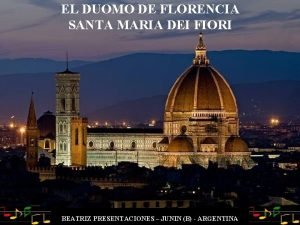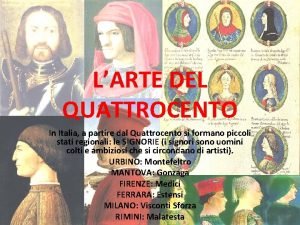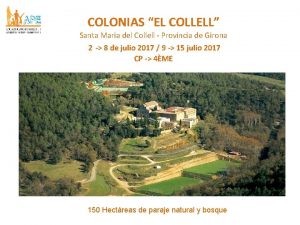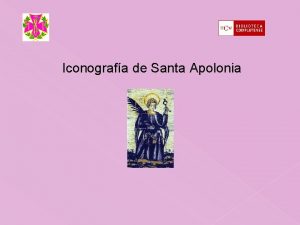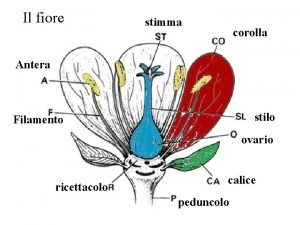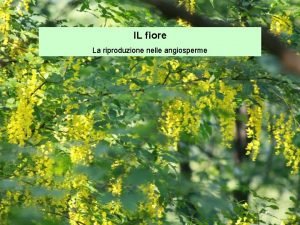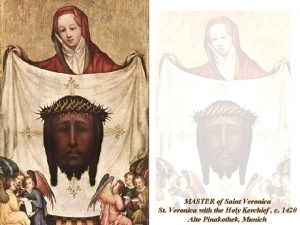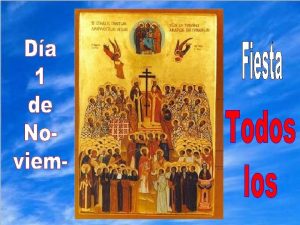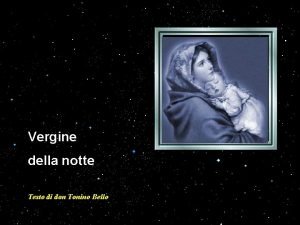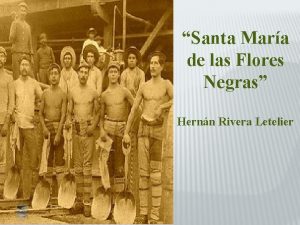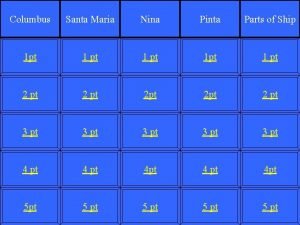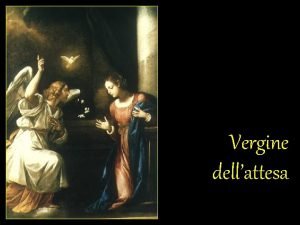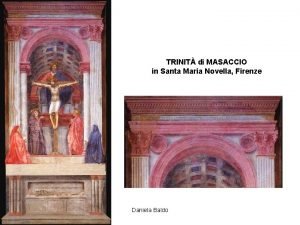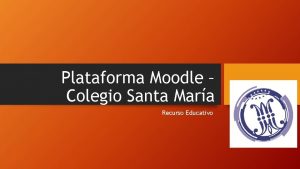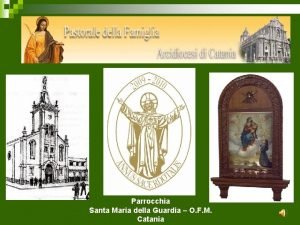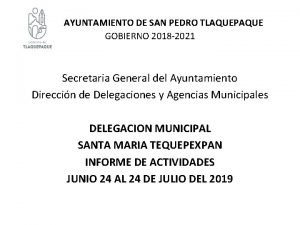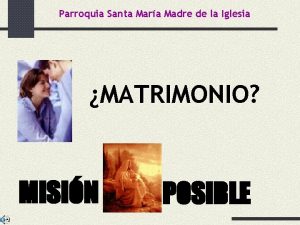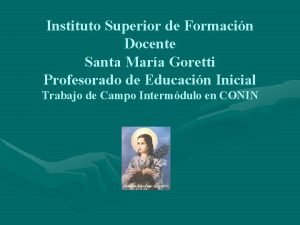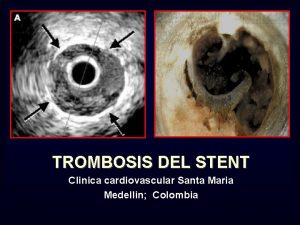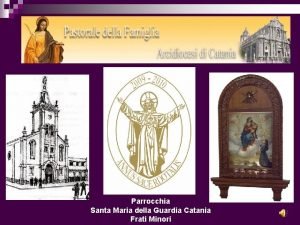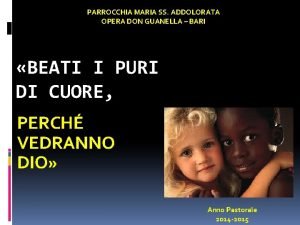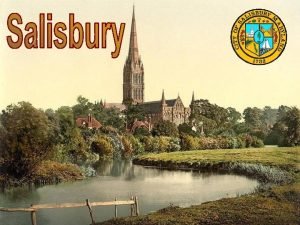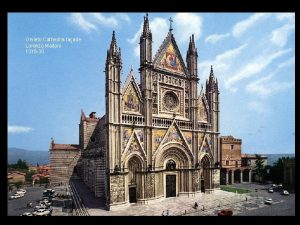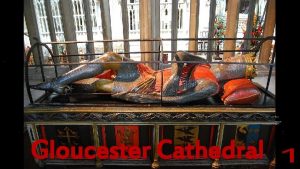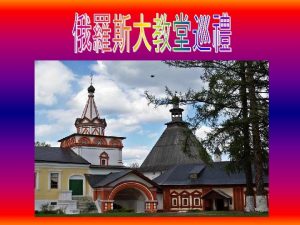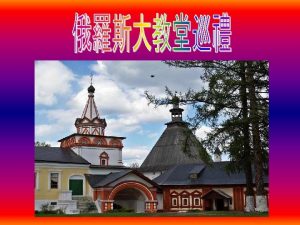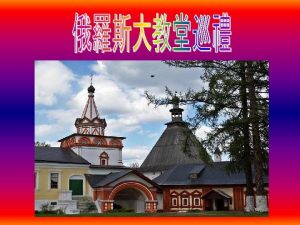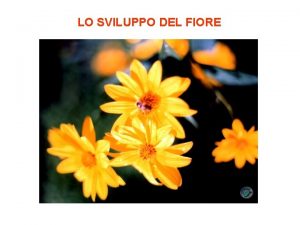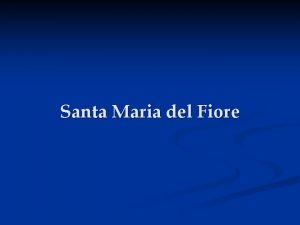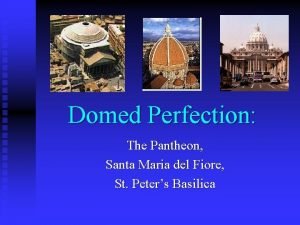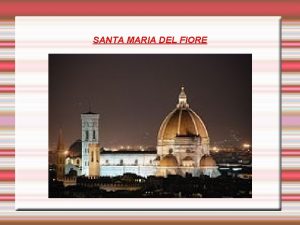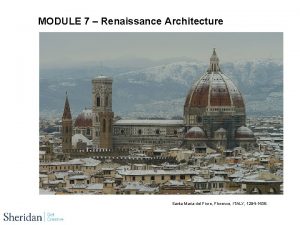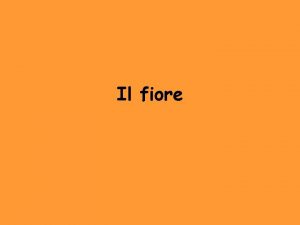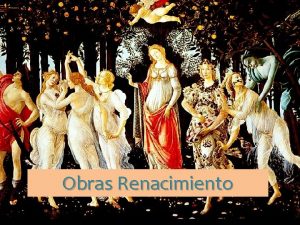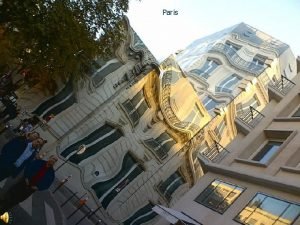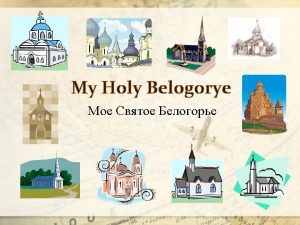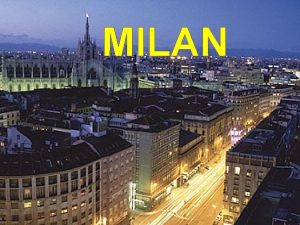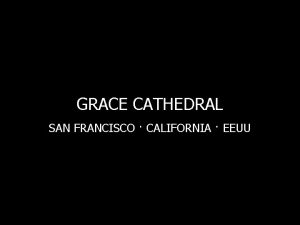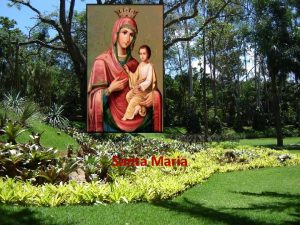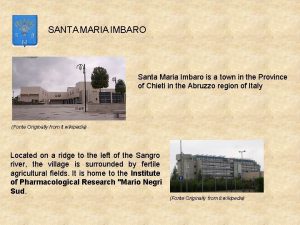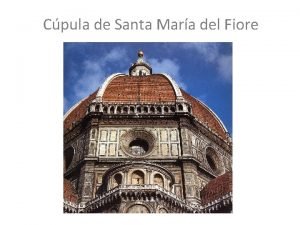The cathedral of Santa Maria del Fiore complex






























- Slides: 30

The cathedral of Santa Maria del Fiore complex

The cathedral complex - including the Baptistery and Giotto’s bell tower - are part of the Unesco World Heritage Site covering the historic centre of Florence.

The cathedral, usually called the Duomo, was started in 1296, in the Gothic style to the design of Arnolfo di Cambio who was also architect of the church of Santa Croce and Palazzo Vecchio. He designed three wide naves ending under the octagonal dome with the middle nave covering the area of Santa Reparata.

The complex of the cathedral was finished in 1436 with the completion of the dome by Filippo Brunelleschi. It was the first octagonal dome to be constructed without a temporary wodden structure. The brick dome on the Basilica is still the largest brick dome ever constructed. Brunelleschi was born in 1377 and died in 1446. He was most known for the dome on the Cathedral, but he also helped in building many other churches including Santo Spirito, San Lorenzo and the Pazzi Family chapel.

Brunelleschi invented linear perspective, creating the illusion of space.

The exterior of the Cathedral is faced with polychrome marble panels in various shades of green and pink bordered by white. The façade is by Emilio de Fabris (1876 -1887) and is all dedicated to the Mother of Christ.

As you can see there is a central nave of four square bays, with an aisle on either side. The chancel and transepts are of identical polygonal plan, separated by two smaller polygonal chapels. The plan forms a Latin cross. The nave and aisles are separated by wide pointed Gothic arches, resting on composite piers.

Chancel Transept Composite pier Aisle Bays Central nave Aisle

The inside of the church can look bare or empty to some people. Most of the artifacts that were in the Cathedral were moved to the Museo dell’Opera del Duomo. The floor of the church was relaid in marble tiles in the 16 th century.

The church was built with money provided by the people of Florence, that’s why some important works of art honour famous Florentine people.

Dante before the City of Florence Domenico di Michelino (1465)

Funerary Monument to Sir John Hawkwood Paolo Uccello (1436) – Monochrome fresco

Equestrian statue of Niccolò da Tolentino Andrea del Castagno (1456) - Fresco

Above the main door A giant clock with fresco portraits of the four prophets by Paolo Uccello (1443). This one-handed liturgical clock shows the 24 hours of the hora italica , a period of time ending with sunset at 24 hours.

Coronation of the Virgin Donatello (1434) designed this stained-glass window in the drum of the dome.

Giotto’s Bell Tower

The Bell Tower stands adjacent to the Duomo, it is 84. 7 metres high and is divided into five sections. You can climb to the top of the bell tower and see a breathtaking view of Florence, it is 414 steps to the top. Giotto was appointed to Master of the Works. This means he had to design and construct the bell tower in 1334 when he was 67. The first stone was laid in 1334 and Giotto would not live to see it completed. When Giotto died (in 1337) only the first floor of the bell tower was completed.

The marble that is laid on the bell tower is white (from Carrara), green (from Prato) and red (from Siena). On the first floor of the tower the hexagonal panels, by Giotto and Andrea Pisano. show the history of man, starting from Genesis in the Old Testament.

In 1343 Andrea Pisano continued the construction of the bell tower following Giotto’s design, adding a second fascia decorated with lozenge-shaped panels. He built two more levels with four niches on each side and each level containing statues representing different prophets which are now in the Museo dell’Opera del Duomo.

Florence Baptistery

Florence Baptistery It stands in both Piazza del Duomo and Piazza di San Giovanni in the center of Florence, in front of the Duomo and Giotto’s Bell Tower It is one of the oldest buildings in Florence. It was built from 1059 to 1128, in the Florentine Romanesque style.

The Baptistery is famous for its bronze doors. The doors on the South were made by Andrea Pisano. The doors on the North and East were made by Lorenzo Ghiberti. The doors on the East were called by Michelangelo “The doors of Paradise”.

The Plan The octagon had been a common shape for baptisteries for many centuries since early Christian times. The number eight is a symbol of regeneration in Christianity, signifying the six days of creation, the Day of Rest, and a day of recreation through the Sacrament of Baptism.

The South Doors by Andrea Pisano (1329 -1336)

The North Doors by Lorenzo Ghiberti (1401 -1422)

The East Doors “Doors of Paradise” by Lorenzo Ghiberti (1425 -1452)

History Until the end of the 19 th century, all Florentine Catholics were baptized inside the Baptistery. Dante Alighieri and many members of the Medici family were also baptised here.

The Restoration of the Paradise Doors The restoration began in 1985. They have been in restoration for 25 years and they are now in the Museo dell’Opera del Duomo. The doors you can see at the Baptistery are a copy of the original ones.

The Restoration Before After

Glossary NAVE: NAVATA DOME: CUPOLA TEMPORARY WOODEN STRUCTURE: CENTINA BRICK: MATTONE CHAPEL: CAPPELLA TRANSEPT: TRANSETTO BAY: CAMPATA AISLE: NAVATA CHANCEL: CORO POINTED ARCH: ARCO ACUTO PIER: PILASTRO BARE: SPOGLIO EMPTY: VUOTO FRESCO: AFFRESCO STAINED-GLASS WINDOW: VETRATA DRUM: TAMBURO ADJACENT: ADIACENTE BREATHTAKING: MOZZAFIATO VIEW: VISTA STEP: GRADINO
 Il duomo significado
Il duomo significado Calotte cupola santa maria del fiore
Calotte cupola santa maria del fiore Santa maria del collell
Santa maria del collell Santa apolonia santa rosa
Santa apolonia santa rosa Carpelli
Carpelli Petalo al microscopio
Petalo al microscopio La ginestra o il fiore del deserto
La ginestra o il fiore del deserto Il fiore e la riproduzione
Il fiore e la riproduzione Santa maria madre nuestra
Santa maria madre nuestra Master of saint veronica
Master of saint veronica Significado de santo separado
Significado de santo separado Madre maria helena cavalcanti
Madre maria helena cavalcanti Maria vergine della notte
Maria vergine della notte Santa maria de las flores negras
Santa maria de las flores negras Kaalamang bayan
Kaalamang bayan Santa maria pinta ja nina
Santa maria pinta ja nina Vergine dell'attesa
Vergine dell'attesa Masaccio trinità
Masaccio trinità Moodle santa maria
Moodle santa maria Santa maria della guardia
Santa maria della guardia Ies santo domingo el puerto de santa maria
Ies santo domingo el puerto de santa maria Delegacion santa maria tequepexpan
Delegacion santa maria tequepexpan Parroquia santa maria madre de la iglesia
Parroquia santa maria madre de la iglesia Instituto superior de formacion docente santa maria
Instituto superior de formacion docente santa maria Clinica cardiovascular santa maria
Clinica cardiovascular santa maria Chiesa della guardia catania
Chiesa della guardia catania Katharos santa maria
Katharos santa maria Louise nevelson wood sculptures
Louise nevelson wood sculptures Consider
Consider Lorenzo maitani orvieto cathedral
Lorenzo maitani orvieto cathedral Milan cathedral altar
Milan cathedral altar
